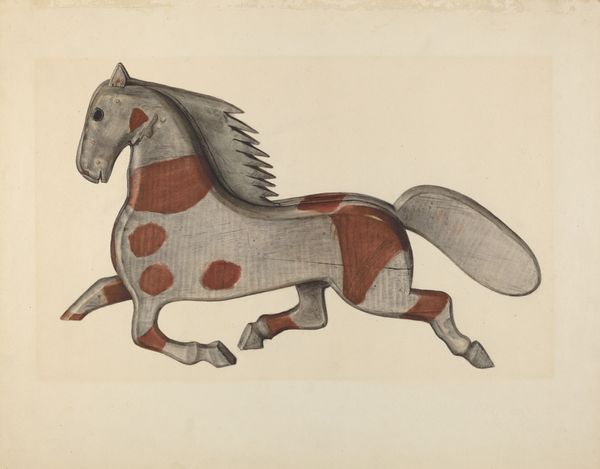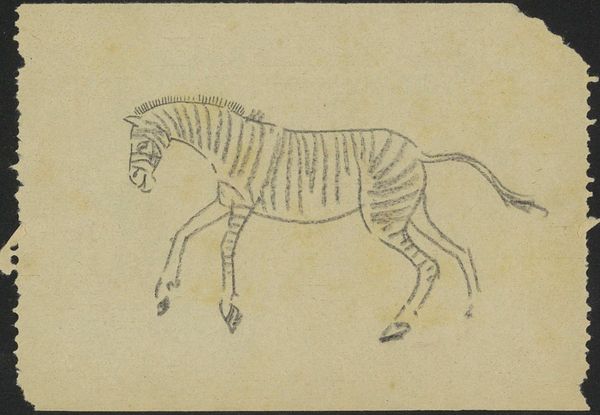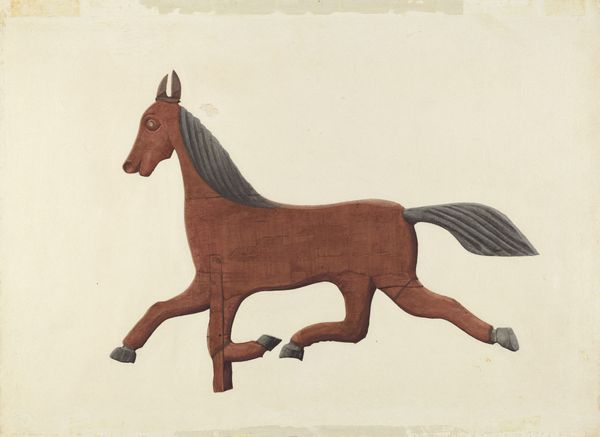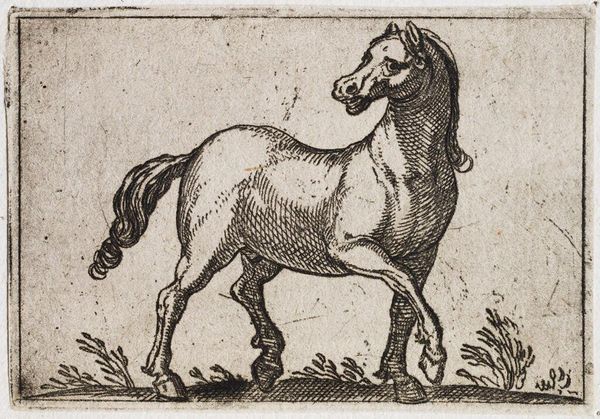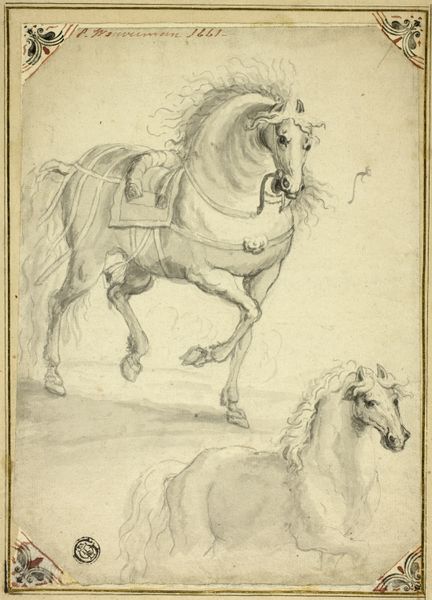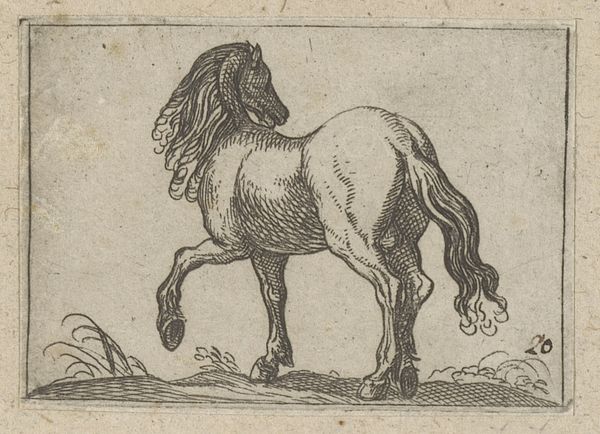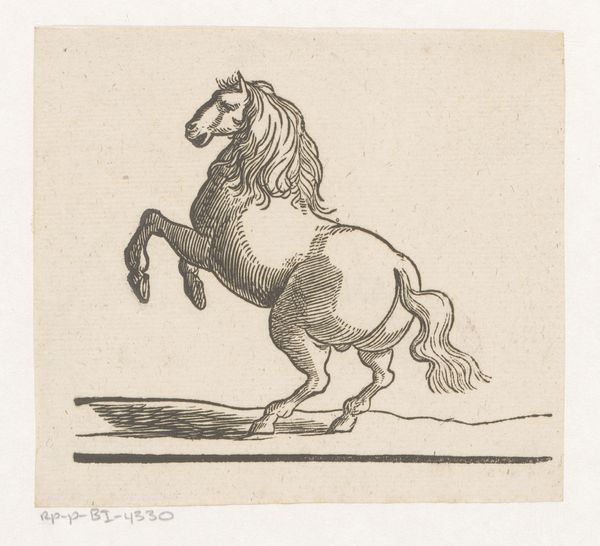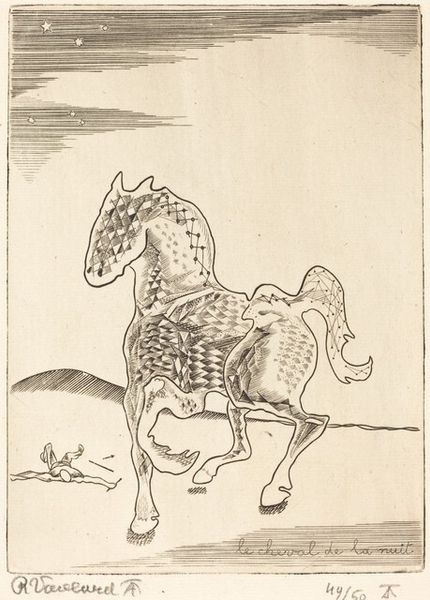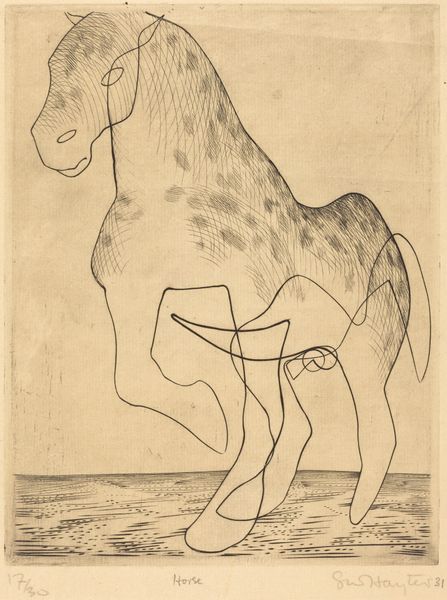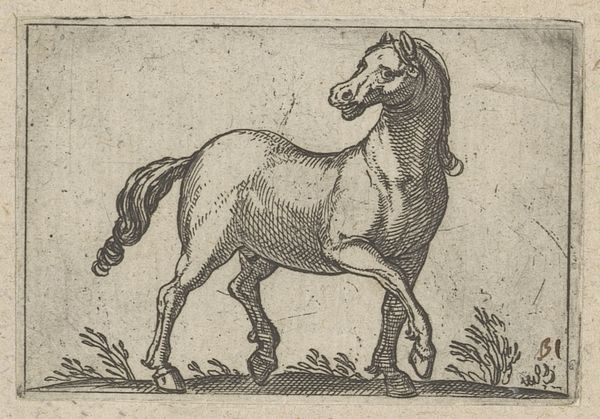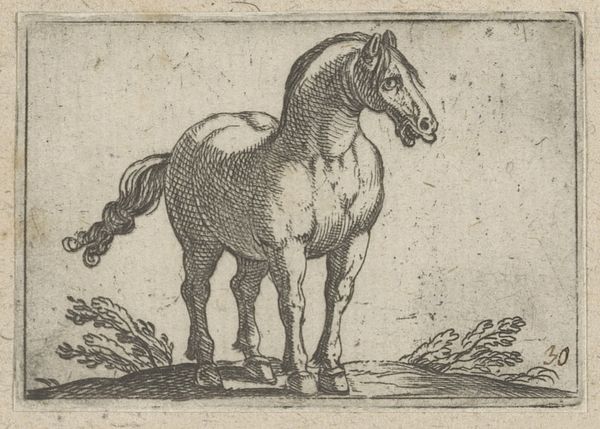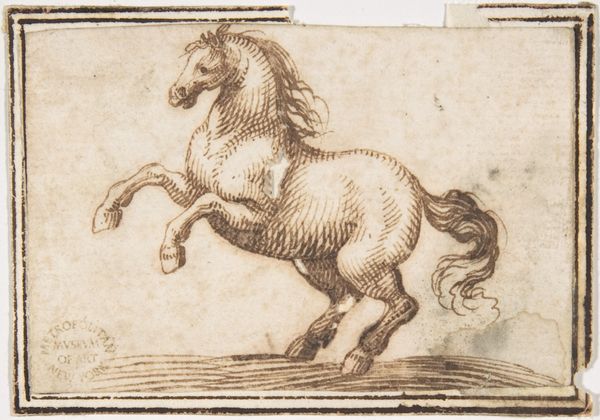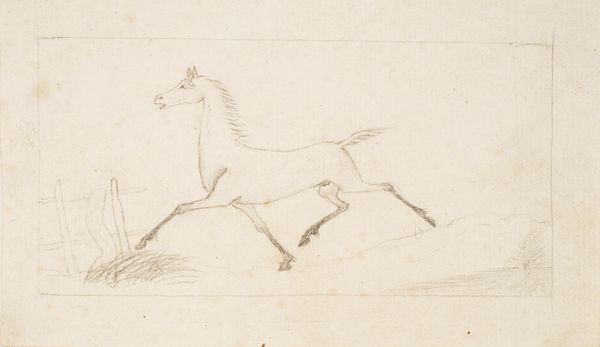
drawing, pencil
#
drawing
#
imaginative character sketch
#
toned paper
#
light pencil work
#
pen sketch
#
fantasy-art
#
figuration
#
personal sketchbook
#
ink drawing experimentation
#
pen-ink sketch
#
pencil
#
sketchbook drawing
#
watercolour illustration
#
sketchbook art
Dimensions: height 123 mm, width 180 mm
Copyright: Rijks Museum: Open Domain
Curator: Looking at "Eenhoorn", an undated drawing from between 1876 and 1924, by Gerrit Willem Dijsselhof, what strikes you most about its appearance? Editor: Immediately, its simplicity. The pale pink of the unicorn itself set against the raw paper creates a rather dreamlike, ethereal feeling, despite the rudimentary linework. Curator: Indeed. The work relies heavily on line, a characteristic seen across Dijsselhof’s graphic oeuvre. The artist primarily employs pencil and ink to give shape to this figure. Notice how line is used not to define the volume but primarily to suggest movement and a gentle spirit. Editor: Yes, you can definitely see the influence of symbolism and the Art Nouveau movement, which sought to blend the decorative and the profound. But I’m curious – the unicorn as a symbol... What might it represent in this period? We see so many depictions that strip this subject of political weight in a domestic setting, how can this sketch act in service of this motif? Curator: The unicorn held multiple layers of meaning during that period, fluctuating across social contexts and class lines. The association with purity and grace persisted from medieval tapestries; however, artists began reimagining these totems in ways that spoke to rising ideas around individual spirituality. Editor: Fascinating. You know, looking at it again, there's almost a naivety to the drawing. Is it just me, or is there a raw expressive quality in the sketching? Curator: Undoubtedly. It embodies this feeling, seemingly drawn directly from imagination. This suggests it served a highly personal and almost therapeutic purpose for the artist rather than as an artwork for a large exhibition or public display. Editor: So it seems to work in relation to self-reflection then? An imaginative flight from constraints imposed from broader historical conflicts during Dijsselhof's life. It offers a different kind of engagement compared to official representations. Curator: Exactly. In essence, this "Eenhoorn" provides insight into both Dijsselhof’s working process and a broader trend wherein fantasy themes in visual culture mirrored complex transformations happening in society. Editor: Well, this little drawing holds more power than I initially expected. Curator: Precisely; it reveals so much upon closer inspection of line and intent.
Comments
No comments
Be the first to comment and join the conversation on the ultimate creative platform.
